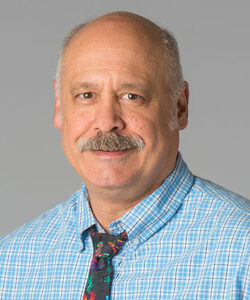Health reform could expose M.D. shortage
Primary-care providers said to be needed to serve expected increase in insured patients from legislation

The recently enacted federal health-care reform legislation that aims to increase coverage of uninsured Americans likely means that many more family practitioners will be needed here to care for the newly insured, some observers here say.
The legislation is to increase coverage by expanding public programs and phasing in requirements that most individuals have coverage and employers offer it.
Under the provisions of the Patient Protection and Affordable Care Act of 2010, more than 30,000 people who don't have health-care insurance in Spokane County now will have some form of coverage by 2019, says Patrick Jones, director of Eastern Washington University's Institute for Public Policy and Economic Analysis.
The legislation also is intended to control rising health-care costs by emphasizing primary care and prevention, reducing patients' needs to see specialists and to stay in hospitals, Jones says.
"The big concern is: Where are all the providers going to come from to take care of all these newly insured people?" he says. "There could be a lot of people who have health insurance, but can't get an appointment."
About 13 percent of Spokane County residents have no health-care coverage, Jones says, adding that nationally, more than 15 percent of the U.S. population is uninsured. The goal of the health-care legislation is to cut the uninsured rate to 6 percent or less nationwide, he says.
While Massachusetts has been held up as a model for universal health care, researchers are finding that some people with health-care coverage there can't find providers to serve them, because the growth of the insured population has outpaced growth in the numbers of primary-care physicians, Jones says. That state is responding by encouraging more medical students to enter primary care rather than specialty fields.
Most states produce far more new medical students than Washington, Jones says.
"Compared with states with like-sized populations, including Minnesota, Tennessee, Wisconsin, and Arizona, we have far and away the lowest production of physicians," he says.
That makes efforts to expand a University of Washington School of Medicine residency program here into a four-year medical school more urgent, Jones says.
Even if Spokane is successful in obtaining state appropriations for the building and operation of a four-year medical school envisioned at the Riverpoint Campus east of downtown, the first class of physicians from that school wouldn't enter the work force for about a decade, he says.
"If more people are going to be insured and have access to health care other than through the emergency room, we clearly may have a shortage of primary-care providers," he says.
Even before the health-care reform legislation was enacted, an EWU study concluded last year that Spokane County faces the challenge of recruiting 20 new primary-care physicians a year through 2020 just to replace retiring physicians and serve the county's projected population growth.
Meantime, it will become increasingly difficult to recruit primary-care providers to come here from other states, because of the shortage of primary-care physicians nationwide, says Keith Baldwin, CEO of the Spokane County Medical Society, which has about 1,000 members. The Association of American Medical Colleges recently estimated that an additional 45,000 primary-care physicians will be needed in the U.S. by 2020 to keep up with demand.
That underscores the importance of initiatives here to cultivate homegrown medical students and to expand residency programs to encourage them to plant roots here, Baldwin says.
Persuading medical students to take up primary care is another problem, he says.
The Association of American Medical Colleges says the number of U.S. medical school graduates entering family medicine has dropped by 50 percent since 1998, and more than 70 percent of new physicians become specialists.
That's because government and insurance payment systems favor specialists, such as cardiologists, who typically earn a lot more money than primary-care physicians, Baldwin says.
Although payment rules have yet to be written, the health-care reform legislation appears to include several incentives for expanding primary care, including 10 percent increases in Medicaid payments, Baldwin says.
He also anticipates that the legislation will encourage bundled services for a single episode of care to cover a physician, a therapist, a hospital, and a pharmacist.
To attract more primary-care physicians, reform will have to include incentives that reward cost savings, says Dr. Thomas Schaaf, Group Health Cooperative's medical director for Eastern Washington and Idaho.
"We know that primary care is going to have a greater emphasis to improve care up front," Schaaf says. "A lot of research shows strong primary care improves the quality of health care and lowers the cost."
Schaaf says he anticipates a widespread transition to an integrated medical-service delivery system from the conventional pay-for-service system.
Health-care reform likely will include incentives for developing integrated care plans for people with chronic conditions, Schaaf says. "Patients will own their own plans," he says, "and nurses and pharmacists will know exactly what the primary-care provider wants and the patient expects."
Ideally, patients will take a more active part in their own care, he says.
"Keeping patients under better control of chronic conditions reduces the cost of having to go to the ER," Schaaf says.
Health-care reform also should include incentives for reaching outcomes, such as increasing the ratio of diabetics with lab results in desired ranges, rather than payments primarily for procedures, Schaaf says.
"Doctors who meet certain benchmarks should get additional incentives," he says. "We have to change payments so savings benefit primary care. We've got to get away from just paying people to do stuff."
Access to primary care doesn't always require face-to-face visits with patients and physicians, Schaaf says. Group Health has realized cost savings through telephone and online visits between patients and doctors, when appropriate, he says. Schaff says such contacts save time and resources and allow physicians to visit longer with patients than they could otherwise.
Related Articles


_c.webp?t=1763626051)

_web.webp?t=1764835652)
